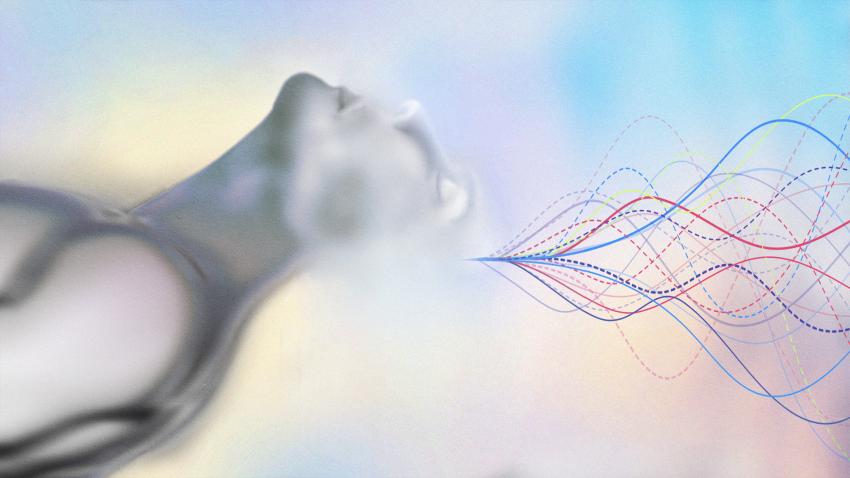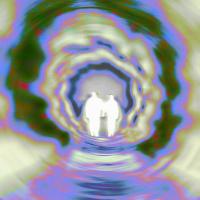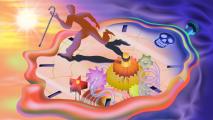Complex brain activity detected in dying patients

In a small study, patients’ brains showed a flurry of activity after their life support was removed. The presence of gamma waves — high-speed oscillations associated with complex thought — while dying may be evidence of something like consciousness in the dying brain, according to researchers at the University of Michigan.
This activity may be behind the centuries of reports of near-death experiences, and responsible for their eerie similarities — and throw into question the dogmatic dichotomy of life and death.
“How vivid experience can emerge from a dysfunctional brain during the process of dying is a neuroscientific paradox,” George Mashour, the founding director of the Michigan Center for Consciousness Science, said. The new study “helps shed light” on the processes that may explain the paradox, Mashour said.
University of Michigan researchers detected a flurry of brain activity in dying patients who were removed from life support.
The study, led by Jimo Borjigin, associate professor of molecular and integrative physiology and neurology at Michigan, was very small, featuring only four patients. But the findings echo animal model studies, where the presence of gamma waves in dying brains has also been observed, including in a previous study in rats that Borjigin and colleagues ran a decade earlier.
“These data demonstrate that the surge of gamma power and connectivity observed in animal models of cardiac arrest can be observed in select patients during the process of dying,” the researchers wrote in their paper, published in PNAS.
What are gamma waves? Gamma waves are high-frequency brain waves researchers believe represent multiple areas of the brain working together in complex thoughts. Take, for example, combining the sight, sound, and smell of a car to get a full picture of the vehicle, Ajmal Zemmar, a neurosurgeon at the University of Louisville uninvolved with the study, told Science.
Researchers have also found patterns of gamma waves in healthy people while dreaming, learning, and recalling lessons, Science reported, with some researchers associating them with consciousness itself. But the exact mechanisms behind gamma waves are “one of the biggest mysteries in neuroscience,” Zemmar said.
A burst of activity: For their paper, the team looked at the medical records of four cardiac arrest patients, comatose and unresponsive, who were removed from life support while undergoing an EEG.
When their ventilator support was removed, two of the patients had an increase in heart rate and a burst of gamma activity. The gamma waves were recorded where the temporal, parietal, and occipital lobes meet in the back of the brain — the consciousness “hot zone.” Signals in this zone have been associated with dreaming, altered states of consciousness and, perhaps importantly, visual hallucinations in people with epilepsy.
The two patients that showed gamma activity had previously reported seizures, Nusha Mihaylova, a clinical associate professor of neurology said — although none during the hour before they died. Mihaylova has been working with Borjigin since 2015, collecting EEG data from patients who died. The other two patients showed neither gamma waves nor a spike in heart rate.
The brain activity was recorded where the temporal, parietal, and occipital lobes meet in the back of the brain — the consciousness “hot zone.”
The upshot: Given the study’s very small sample size, the authors warn against making sweeping claims because of their data. Since all of the patients died, they also could not know what, if anything, the patients experienced before their death — the gamma waves could not be tied to a near-death experience.
“However, the observed findings are definitely exciting and provide a new framework for our understanding of covert consciousness in the dying humans,” Bojigin said.
The findings do jibe with other observations. Louisville’s Zemmar has also spotted gamma waves in a person who died of a heart attack while having their brain measured for seizures, and in a large study of CPR patients, researchers led by NYU’s Sam Parnia were able to detect multiple brain wave signals, including gamma.
All of which suggests that the time of “death” is, perhaps, not so easy to define and delineate.
“We have this binary concept of life and death that is ancient and outdated,” NYU’s Parnia, who was not involved with the Michigan study, told Science.
We’d love to hear from you! If you have a comment about this article or if you have a tip for a future Freethink story, please email us at [email protected].




















